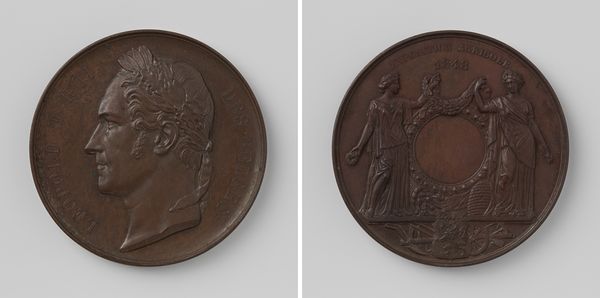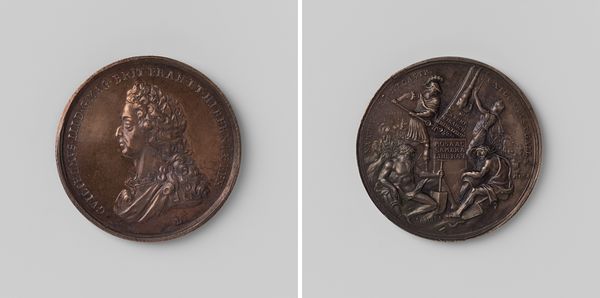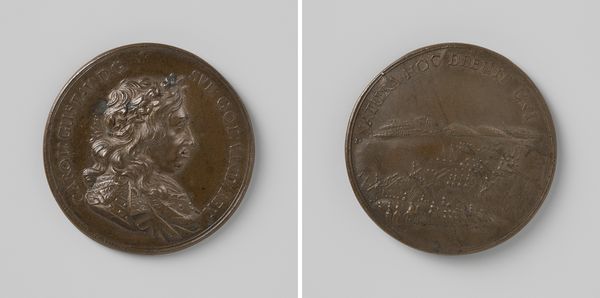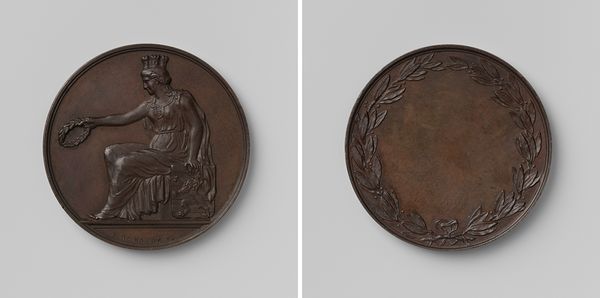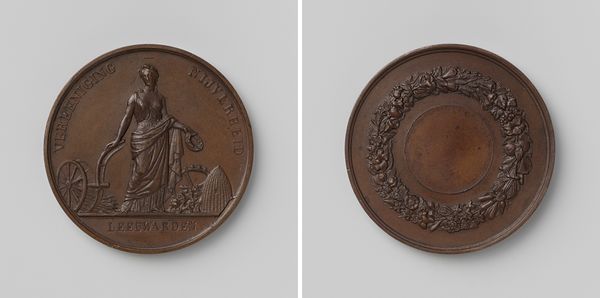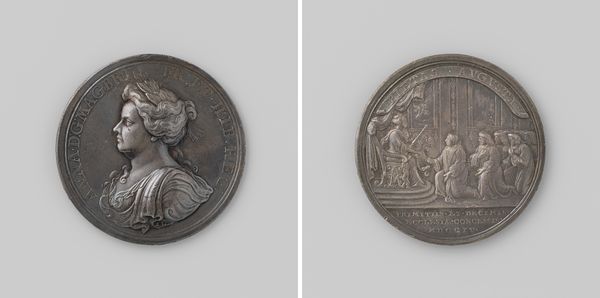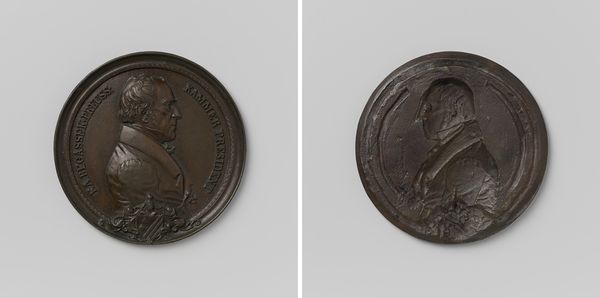
Prins Frederik vijftig jaar Grootmeester van de Orde der Vrijmetselaars in Nederland 1866 1866
0:00
0:00
metal, relief, bronze, sculpture
#
portrait
#
metal
#
stone
#
sculpture
#
relief
#
bronze
#
sculpting
#
sculpture
#
statue
Dimensions: diameter 6.1 cm, weight 100.81 gr
Copyright: Rijks Museum: Open Domain
Editor: Here we have a bronze relief from 1866 commemorating Prince Frederick's fifty years as Grand Master of the Order of Freemasons in the Netherlands, crafted by Jacob Samuel Cohen Elion. The formality is really striking, with the Prince shown in profile and then almost deified on the other side. What do you see in this piece, beyond the surface level? Curator: Beyond its function as a commemorative object, I see this relief as a powerful symbol of intertwined power structures in 19th-century Dutch society. We need to ask, who were the Freemasons, and what did membership signify? It wasn't simply a social club. Editor: Right, there’s definitely a political element hinted at here. Curator: Absolutely. Consider the context: Prince Frederick, a member of the ruling family, leading a fraternal organization that, while ostensibly focused on self-improvement and philanthropy, also fostered networks of influence. It speaks to the way power operated then, less through overt displays of authority, but through interwoven affiliations. What is being concealed within this "secret society," that is at once also a part of government. Editor: So the relief is not just about celebrating an anniversary, it is about reinforcing a very specific and potentially exclusionary network of power. Curator: Precisely. The symbolism on the other side, with the radiant figure and the laurel wreath, almost elevates Prince Frederick to a god-like status. How does this connect to larger debates about nationalism and legitimacy in the Netherlands at the time? By linking the monarchy to Freemasonry, what claims were being made, and who was being excluded? Editor: I hadn't considered it in that light. I was so focused on the formality that I missed the undercurrents of power and exclusion. It makes me question the role of these commemorative objects, are they trying to hide these facts, or subtly highlight them? Curator: Exactly, they present power as self-evident truth. Understanding art, therefore, demands more than formal analysis; it requires historical context and intersectional awareness. It is exciting to continue my own questioning with you today.
Comments
No comments
Be the first to comment and join the conversation on the ultimate creative platform.
